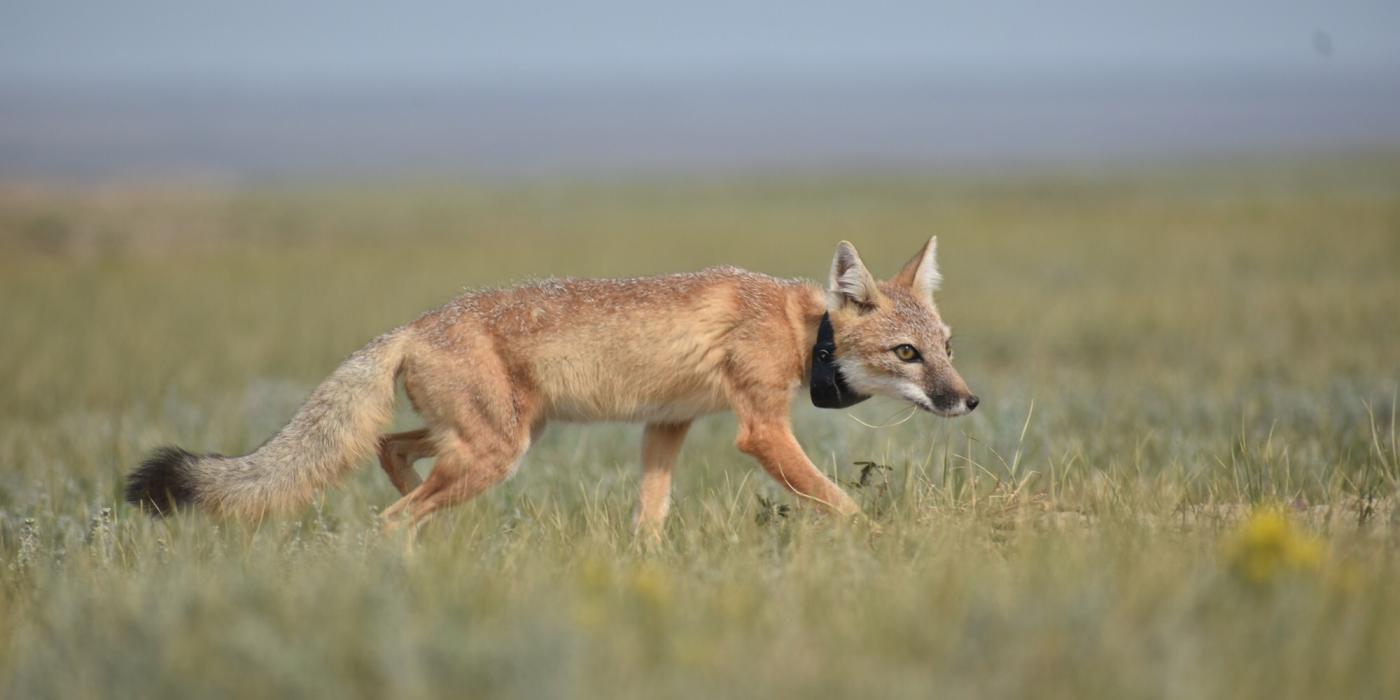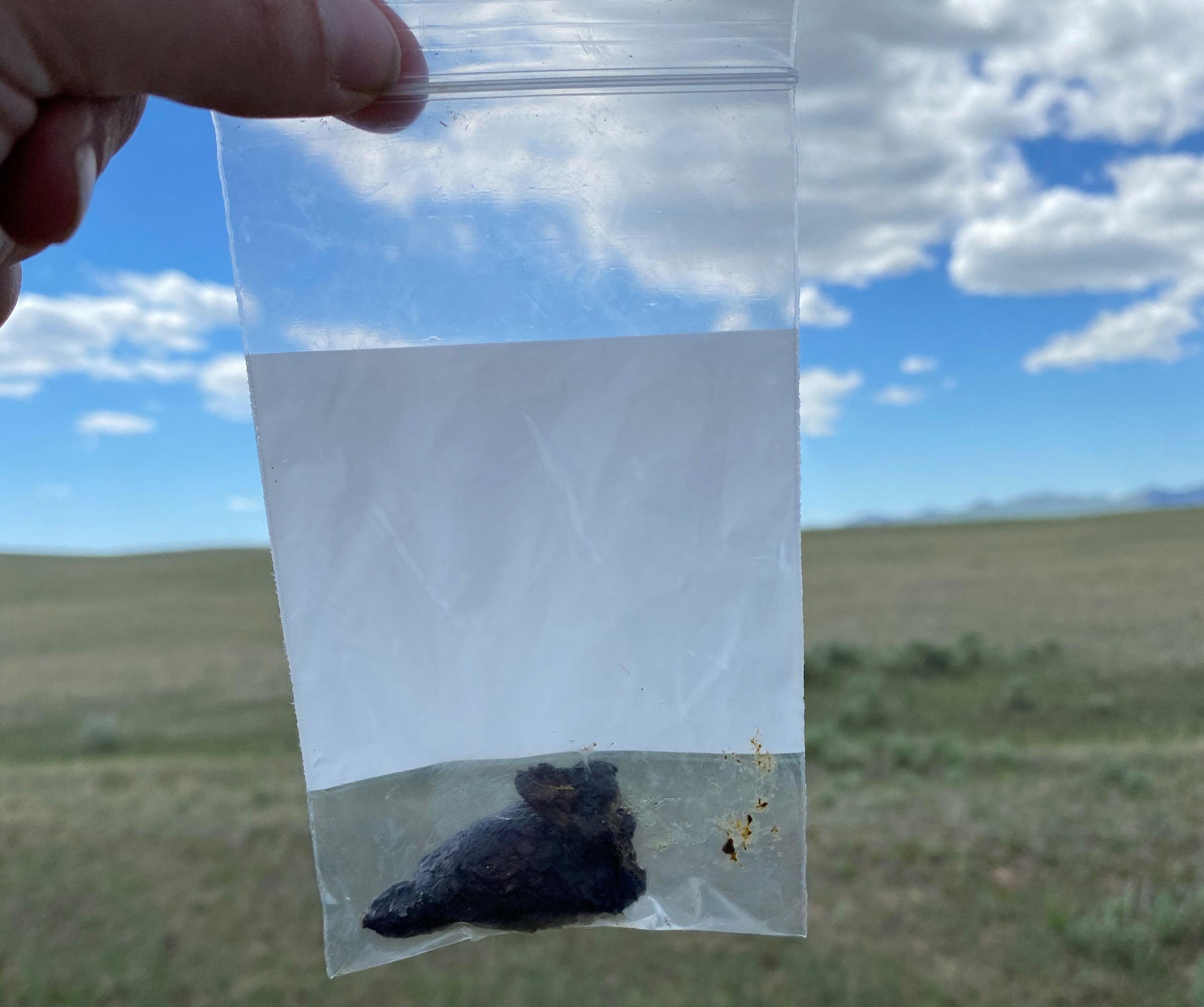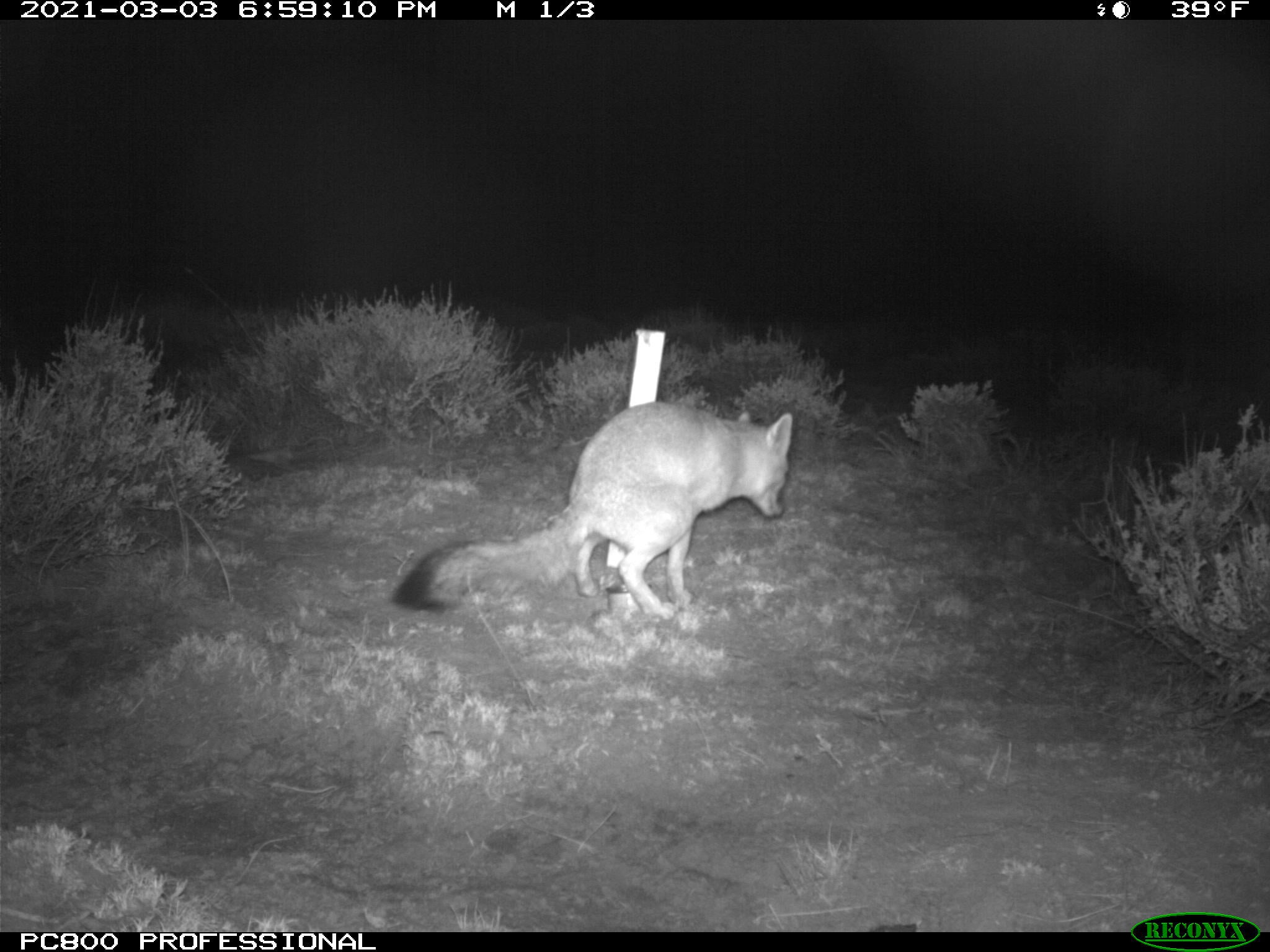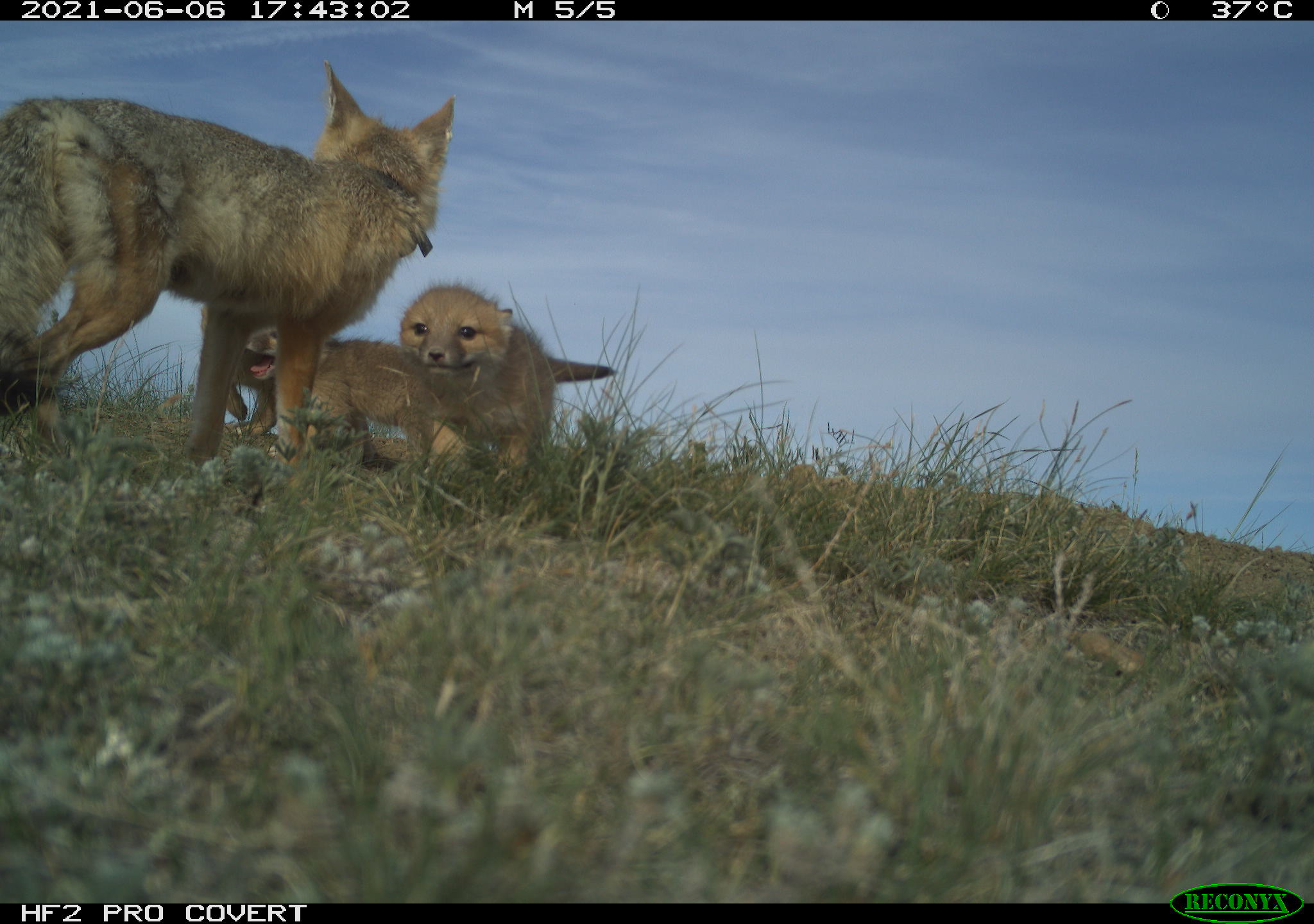Learning About Swift Foxes from What They Leave Behind


Sometimes, science stinks — literally! Poop, or “scat,” is one of the best sources of information for learning about wild animals. Scat contains DNA and hormones, which can reveal a lot about the animal that left it behind. We are starting to set up “scat traps” around Fort Belknap Indian Reservation in Montana to attract swift foxes — and entice them to leave some droppings behind.
Swift foxes had been absent from the grasslands of Fort Belknap for decades until the Assiniboine (Nakoda) and Gros Ventre (Aaniiih) Tribes took on the ambitious goal of bringing them back. In September 2020, tribe members and conservation partners, including the Smithsonian Conservation Biology Institute, kickstarted a five-year reintroduction program with the release of 27 swift foxes on tribal lands. The program is bringing these culturally important animals back to the community and helping to reconnect swift fox populations across their geographic range.
The swift foxes have been selected from healthy populations in Wyoming and Colorado, and then moved to the reservation. Now, community members and researchers alike want to know how they are doing in their new home. The foxes wear GPS collars that collect data for about a year, so we can learn about their movements and the habitats they choose. After that, we have to look for swift fox families on our own.

Swift foxes are mostly nocturnal when they are not raising pups. In the spring and summer, they are more active during the day, so the chances of seeing them are much higher. In fact, Fort Belknap biologist Tim Vosburgh and I had one of those special sightings in May. While touring a remote part of the reservation one afternoon, we spotted a pair of swift foxes. We were both in disbelief, as we had spent the prior week searching for litters with little luck.
We studied the pair with our binoculars. Then, fingers crossed, we quietly and safely set up two trail cameras to see if we could document any pups. We checked the cameras a few days later and were elated to see a tiny pup exploring aboveground. The photo was proof that swift foxes had successfully reproduced in this area for the first time in more than 50 years!
The pair had a litter of four pups, and they are growing quickly. In September, these wild-born pups will leave their family den site to choose new homes. Hopefully, they will go on to find mates and have their own pups next spring. As they move away from their parents, and as the reintroduced population grows over time, the foxes will become harder to track.
Swift fox home ranges are shockingly large for 5-pound animals and, along with their nocturnal nature, this makes them hard to find. That’s where scat comes in — and is our most important tool for learning about Fort Belknap’s foxes.

A scat sample collected from the first den we located in May 2021.
You might think that finding tiny swift fox scats in the vast grasslands would be tough. Luckily, we can take advantage of an interesting fox behavior to find scat samples. Swift foxes are known to defecate (poop) in reaction to new or unusual scents and objects — especially as they near the breeding season and start to mark their territories. To get foxes to leave scat where we can easily collect it, all we need is something stinky.
A skunk-based scent lure and a punctured can of cat food are the perfect combination. These scents have been tested before, so we know they work. We place the smelly objects in front of a remote camera. Every few days, we visit these “scent stations,” collect any scat and check the camera. The images tell us whether it was in fact a fox who left the scat behind. The photos can also show us whether the fox had a GPS collar, and the date and time of the fox’s visit.

A scat sample contains residual DNA and hormones, which we can analyze in a lab. The DNA allows us to identify an individual fox and learn its age, sex and relatedness to other foxes. When we combine our data on swift foxes with similar data from coyote scat, we can estimate their density — how many swift foxes and coyotes live in the area. Patterns in density can tell us where coyotes and swift foxes are most common and how they might influence one another. Fort Belknap biologists can then make decisions about how best to manage their fox population. For example, biologists may choose to release foxes in the future in areas farther away from where there are lots of coyotes.
Scat can also tell us how an individual fox is doing. Using the freshest scat samples, we can measure hormones to learn about a fox’s stress levels and nutrition. Both play a role in their survival and reproduction. We also hope to learn more about the swift fox’s diet, using a process called DNA metabarcoding. Simply put, we can identify DNA from other plants and animals within a fox’s scat to find out what it ate.
In short, scat can help us identify what Fort Belknap’s swift foxes need in order to thrive in their new home. And we can gather all this important data without ever having to physically capture the foxes, which reduces stress for them and allows us to cover more ground.

From October to December, we will place more scent stations and cameras in about 300 locations, and visit them every few days to collect scat. We are excited about the chance to learn more from Fort Belknap’s reintroduced swift foxes and their wild-born kits — all from the poop they leave behind.
The swift fox reintroduction program is a partnership with Fort Belknap Indian Community, the Smithsonian Conservation Biology Institute, Defenders of Wildlife, American Prairie, Calgary Zoo and World Wildlife Fund. Foxes are selected for translocation from healthy populations in the states of Wyoming, Colorado, and Kansas, where wildlife authorities are also lending their expertise in support of this program. Graduate students with Clemson University and George Mason University contribute to the ongoing monitoring and management of the reintroduced swift fox population.
